Overview
At Sound & District Primary School we strive to enable children to be fully literate and articulate. We want them to be fully prepared for their secondary education and later life. Through engaging lessons, we aim to foster a love of English and an enjoyment of learning. English enables children to express themselves creatively and imaginatively. They will become enthusiastic and critical readers of stories, poetry and drama – as well as non-fiction and media texts. We challenge children of all abilities and strive for excellence. Children are encouraged to have a growth mind-set and to develop the skills of perseverance and resilience. Through reading in particular, pupils are given a chance to develop culturally, emotionally, intellectually, socially and spiritually. We celebrate children’s hard work and effort, as well as their success. They are encouraged to revisit their work, making changes and developing their ideas to ensure they achieve their best.
Curriculum Intent
Our intent in English is to ensure all pupils are taught the knowledge, skills and vocabulary appropriate to their year group focusing on the key end points.
Curriculum Statement
‘Teachers should develop pupil’s spoken language, reading, writing and vocabulary as integral aspects of the teaching of every subject. English is both a subject in its own right and the medium for teaching; for pupils, understanding the language provides access to the whole curriculum. Fluency in the English language is anessential foundation for success in all subjects.’
(National Curriculum English, 2014, Pg. 10)
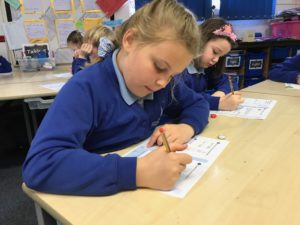
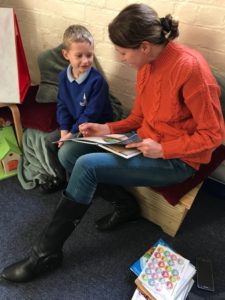
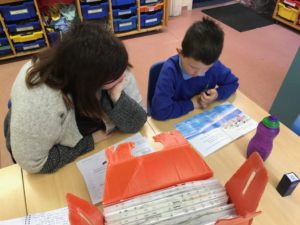
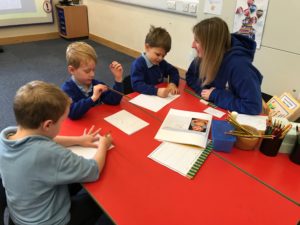
READING
“If students don’t love what they’re reading, they’ll never learn to love to read, ” Jan Richardson
Early Years and KS1
Our school uses Little Wandle (Letters and Sounds Revised) as as our systematic synthetic phonics (SSP) programme to teach early reading and spelling. It is based on the original Letters and Sounds, but is fully resourced and sets expectations of progression that are aspirational yet achievable. We will work through the entire Little Wandle Programme until your child can successfully utilise their phonic knowledge and blending skills to read fluently. Children need to learn to read as quickly as reasonably possible, so they can move from learning to read, to reading to learn, giving them access to the treasure house of reading. Children in Reception and Year 1 have daily phonics lessons. They are taught 4 new grapheme phoneme correspondences (GPCs) per week, plus a review lesson on a Friday. Knowing a GPC means being able to match a phoneme (sound) to a grapheme (written representation) and vice versa. The children will also learn a series of ‘tricky words’. Tricky words are those words with code that has not been taught yet. We build into the timetable some weeks for the children to consolidate what has been taught so far. We assess your child every six weeks to check progress. Any child who needs extra support will have keep-up sessions planned for them.
Children in Reception, Year 1 and Year 2 will also take part in Reading Practice Sessions. We use our gorgeous books published by HarperCollins for Little Wandle.
Reading Teaching Sessions are:
● Timetabled 3 times a week
● Taught by a trained teacher / teaching assistant
● Taught in small groups
The children read the same book three times a week. The first time we work on decoding (sounding out) the words, the second time we work on prosody, which is reading with expression – this aids comprehension and encourages our children to read like writers and the third time we look at comprehension. We read the book three times in school because we want to develop fluency. The more children see words, the more they begin to read them automatically. This book will then be sent home for your child to share their reading skills with you.
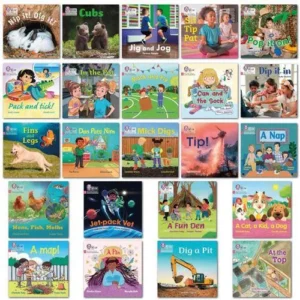
It is vital for children to learn the skills of reading so they can enjoy a variety of fiction, poetry and non-fiction books. However, reading teaching is also about giving the children the chance to experience the excitement wonder and fascination that can come from reading, to feel what it is like to lose themselves in a story. Effective reading teaching needs to planned carefully so it supports children to become confident readers, able to picture the texts they read in their imaginations. The text for a reading lesson is more challenging than a child might be able to read independently as we are there to support comprehension, explaining the meaning of words or key ideas.
Lessons are planned either around the class text ( which is being read over several weeks) or poetry and non-fiction.
Reading Vipers are displayed in each classroom and are used to reiterate different comprehension skills. These are utilised in both KS1 and KS2 with a little adaption. The main difference being in the S.
Sequence- KS1
Summarise-KS2
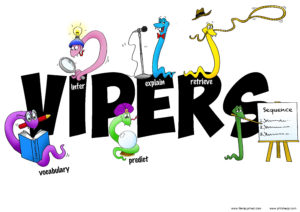
Reading For Pleasure and Fostering a Love of Reading
In order to help the children foster a joy of reading, all children will have a quality book read to them each day. In order for these sessions to be fully immersive, the books will be read without stopping for discussion. Some of the texts read will be from our reading overviews and reading spine for each year group, others will be the teacher’s free choice, selected as new books are published or recommended.
In Key Stage 2, the children have time each day devoted to quiet reading.
Throughout the year, classes will focus on different authors such as: Dick King Smith, Jenny Nimmo, Julia Donaldson, Helen Ward, Robert Swindles, to encourage the children to read a variety of different authors and genres.
At times, multiple copies of books will be available to allow the children to read along during whole class reading sessions.
In all classrooms, the children will have the opportunity for Book Talk – sharing favourite stories, discussing preferences and recommending books.
Additionally, each class has a poetry box containing books recommended by Pie Corbett, Literacy Expert.
“The Poetry Spine is designed to ensure that each term children become familiar with at least one key poet. ” Pie Corbett
We try to ensure that poetry becomes a regular feature in our curriculum by establishing a ‘poem of the week’ system. This ensure that children have poetry read to them on a regular basis over the years increases their familiarity with poetry’s many possibilities.
Click on the links below to see the Reading Overviews for each year group.
OPAL Y3 and Y4 Reading Overview
TOPAZ Y4 and Y5 Reading Overview
Independent Reading KS2

At Sound, we love to encourage our children to read for pleasure and to improve their skills when interpreting a range of texts. To promote individual reading at home and at school in KS2 , we use Accelerated Reader as this helps us to assess exactly what age our children are reading at and identify areas for their development. From Year 3 onwards, children begin their Accelerated Reader journey. Accelerated Reader aims to assess your child’s reading age and identify areas of development in reading skills against the objectives of the National Curriculum. Reading ages are assessed through the completion of a Star Test (an online reading test that the children take 4 times per academic year) which generates a ZPD number.
For further information about Accelerated Reader, click on the link below:
Not sure what to read? Have a look at our year group recommended reading lists…
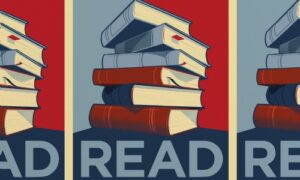
WRITING
 Learning and Teaching
Learning and Teaching
Each year group will cover a balance of Narrative, Non-Fiction and Poetry text types. We use the National curriculum 2014 to support our coverage of English skills. This is then supported by the key principle of Talk for Writing/The Primary Writing Project (Pie Corbett/Julia Strong), which underpins our planning and delivery of English; from Reception to Y6.
This involves:
- making explicit the processes and thinking involved in the writing process so that ultimately they can be internalised and applied by children in their own writing.
Talk for Writing will be embedded in every phase of the ‘Teaching Sequence’ and used frequently both within English lessons and across the curriculum. Teachers use Talk for writing books/documentation, to support their planning and delivery of English.
In summary, writing follows the sequence of the ‘Three Is’;
Preparation
In preparation for planning the teaching of the new genre, children complete a Cold Task. This is used to inform the teacher which specific language features, grammar foci, word and sentence level activities are needed to be planned for within the teaching process. Genre targets and individual grammar targets are set from this and shared with the pupils.
Imitation
This is the stage of the unit where children are immersed in the text type. Children will become familiar with the language rhythms and patterns that are involved within the text. It is impossible to write a sentence pattern without being able to say it. This helps children to internalise the patterns of language, children may refer to this as ‘talking the text’. Key vocabulary is identified and displayed to be referred to throughout. This is where a writer’s toolkit may be created and further exploration into grammatical features and deeper meanings may be explored. Children may explore other similar texts; they may draw upon underlying structures and language features of the original model to create their own version.
Innovation
Using internalised techniques and structures children now start to imitate and invent a new idea; this may be a character, story line, text-type etc. At this stage children will move to becoming more independent writers. Children will be encouraged to write within the same text type, but may choose different topics that interest and intrigue them.
Modelled, shared, guided and independent writing will be evident throughout this sequence and will support both independent and groups of children, following teachers’ formative assessments.
Assessments will inform shared writing and will inform the groups that are needed for guided writing.
Rich texts will be used as a stimulus for the writing sequence, a range of texts may be used throughout; alongside the main text.
Invention
This is where pupil write a new piece of writing from a new stimulus. This is called the Hot Task and is used to identify whether targets from the Cold task have been achieved.
Check out our new gallery link below to see further enrichment activities linked to English.

